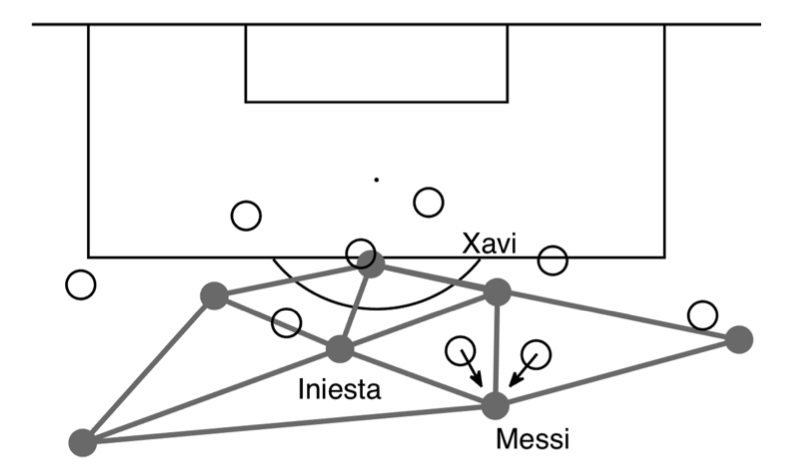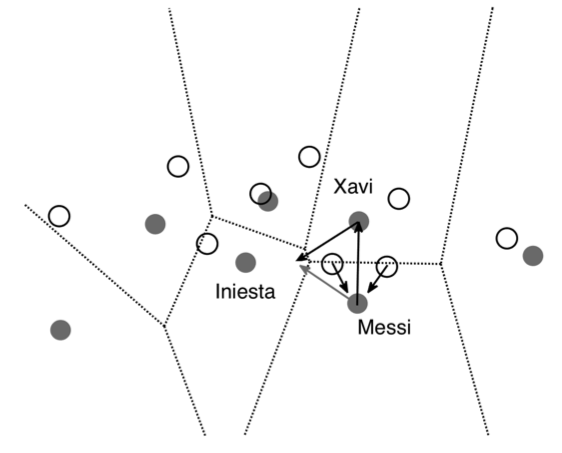Controlling Space
Watch the video first.
Voronoi diagrams
Lionel Messi isn’t a bad player on the ball. But this quality is not the thing to concentrate on. Instead, have a look at (in the 2008-2012 Barcelona in particular) ow his team-mates move around him. Typically, he will pass the ball directly to Iniesta or Xavi and then run forward, and a second later the ball is back in front of him. In the build-up to their best goals, Barcelona make four or five of these direct passes. Now pause the video at exactly the point when Messi passes the ball, and look at how his team-mates are positioned.

In the drawing above from a Champions League match between Barcelona and Greek champions Panathinaikos in 2010, Messi has the ball and is moving towards the goal, and two Panathinaikos players are moving to tackle him. The passing triangles show Messi’s options. Xavi is directly in front of Messi, with Iniesta to his left. We can already see that their positioning is good because both can receive a direct pass.
But by drawing a Voronoi diagram, below, we start to see just how good these positions are.

The Voronoi diagram divides up the pitch based on which positions are closest to the players. What is stirking here is that
Implementing a pitch control model
Laurie Shaw describes everything you need to create a pitch control model in Python.
Code for this tutorial can be found here
Data used in this tutorial can be found here
Pitch Control in Pressing
Here, David explains an application of pitch control in pressing to get the ball back.